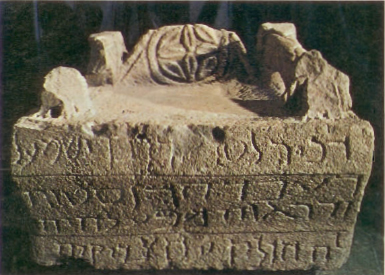Moses Seat, 2nd century CE
Moses Seat
“The scribes and the Pharisees sit on Moses’ seat” (Mt. 23.2), a carved stone chair reserved for a visitor of for the most distinguished elder of a synagogue. This one is from Chorazin, one of the three towns Jesus inveighed against for their citizens’ hypocrisy.
G. Ernest Wright (ed.), Great People of the Bible and How They Lived. Pleasantville, NY- Readers Digest Assoc, 1974.
In 1926 a unique stone seat was found near the southern wall of the Chorazin synagogue. Since then it has been called the “Chair of Moses.” The Chair of Moses is a special seat that is used in some synagogues, even today, on certain occasions, usually located near the most important wall, that which faces Jerusalem.
On the Chair of Moses was inscribed in Aramaic- “Remember for good Yudan the son of Ishmael who made this stvh and its steps; may he take part with the pious.” Stvh has been understood as the Greek word stoa (v [vov] and h [he] are so-called matres lectiones, or consonants used as vowels. The Hebrew letter vov was used for a long o and the Hebrew letter he for a short a). A stoa is a portico supported by columns. Another interpretation of this work was published by Jacob N. Epstein in 1930 in a paper on the inscription on the Chair of Moses. According to his view, and ours, stvh refers to the Hebrew or Aramaic word istava which means a shelf, a platform or a small roofed and decorated dais (bema, plural bemot) on which the chair probably rested and from which the scriptures were read or chanted. A small replica of this bema was found on a frieze fragment.
Ze’ev Yeivin, “Ancient Chorazin Comes Back to Life,” BAR 13-05, Sep-Oct 1987.




